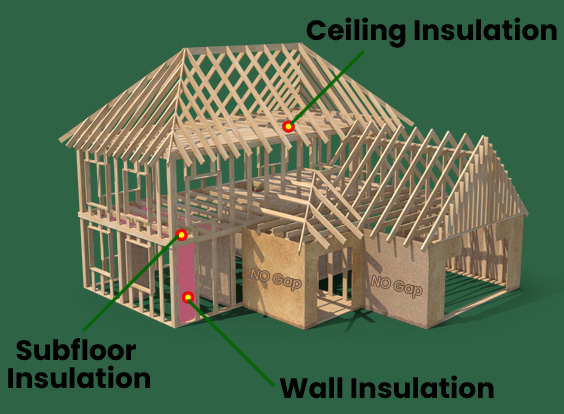
Insulation can be installed in several areas of the home, including the ceiling, walls, underfloor and sub floors for multiple storey homes.
Insulation can be installed in several areas of the home, including roof/ceiling, walls, underfloor and sub floors for multiple storey homes.




No Gap Insulation ensures that we only partner with brands that are committed to sustainability in their practises, including creating products out of recycled materials, reducing wastage and maximise compression packaging to reduce transportation energy expenditure.
Installing insulation in a home reduces the need to rely on heating and cooling appliances, as it acts as a barrier to heat flow and blocks out unwanted heat or cold from outside. This creates a more energy efficient home and saves you money on your energy bills.
A well insulated home does not need to heavily rely on heating and cooling appliances. This means your home is using less energy and your personal greenhouse gas emissions are vastly reduced.
As Melbourne’s leadings insulation suppliers and installers, No Gap Insulation understands how important it is to have quality insulation installed in your new home. This simple step in the building or renovation process will be hugely beneficial to you and your home in the long run. How, you may ask?
As Melbourne’s leadings insulation suppliers and installers, No Gap Insulation understands how important it is to have quality insulation installed in your new home. This simple step in the building or renovation process will hugely beneficial to you and your home in the long run. How, you may ask?


Insulation Batts / Ceiling Insulation Batts / Insulation Installers Melbourne / Home Insulation / Sound Insulation / Insulation Removal Melbourne / Roof Insulation / Pink Batts Insulation / Earthwool Insulation / Thermal Insulation
No Gap Insulation © 2023
Click and collect is now available for all online orders subject to availability and stock levels. Please allow one working day for orders to be processed. We will notify you when your order is ready to be picked up. Please note that all orders processed on weekends and public holidays will be organised the next working day.